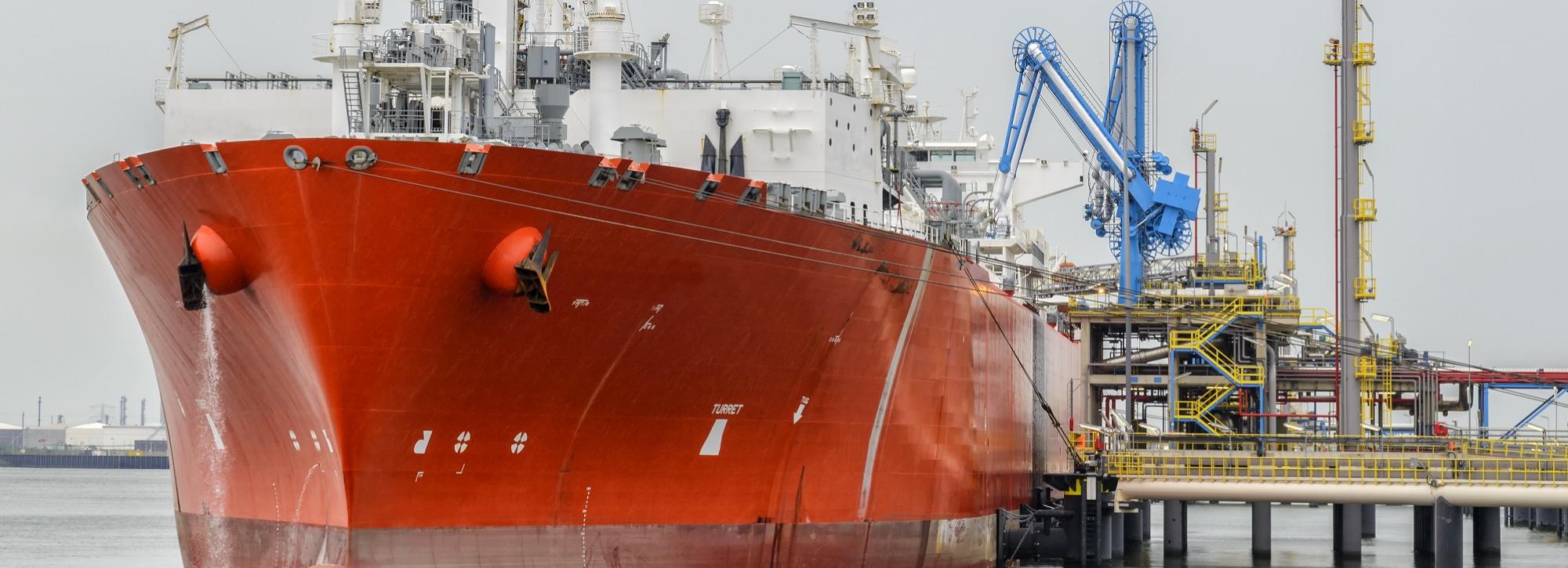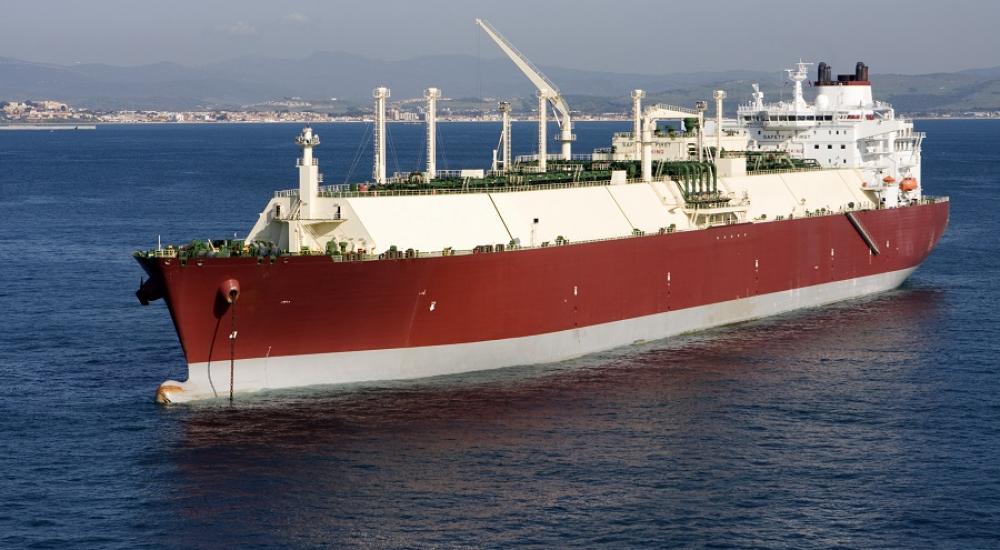
Ports can thrive in a low carbon future
As the world looks to cut its carbon output, ports and harbours will need not only to embrace ways of reducing their own footprint, but also be ready to support shipping customers in their decarbonising ambitions. Thankfully, low carbon options and ‘greening the grey’ measures bring with them savings and opportunities, as Mark Lee explains.
Throughout their long history, ports have been at the centre of changing trading patterns and global economic trends, adapting their design and operations to accommodate evolving trends in transportation and cargoes. As the world increasingly seeks lower carbon solutions, ports are already starting to respond, refining their own operations, and adapting to meet their customers’ needs.
There are multiple low carbon options and eco-friendly measures that ports can (and in some cases do already) implement, including: optimising dredging operations, and, where possible, using dredged material to the benefit of the environment; designing port infrastructure to keep construction materials to a minimum; introducing biodiversity into existing and new structures; taking full advantage of port locations to generate renewable energy on site; offering services to the offshore wind industry; and adapting to support evolving ship design as the industry moves to lower and zero carbon fuels.
Minimising dredging
Cutting emissions by refining dredging practices and techniques is one of the most obvious areas for ports and harbours to make carbon savings, and this can result in significantly lower costs and can sometimes provide ecological benefits too.
To reduce the volume dredged, understanding exactly how ships move in port and the access channel is key. Navigation simulations can be used to model the manoeuvring of the design vessel to more tightly define the area requiring dredging. We recently used this approach to help a client significantly reduce their maintenance dredge requirement (and associated carbon release), which also saved the customer $4 million in expenditure for dredging (and will continue to save them significant sums as they do maintenance dredging into the future).
Capital and maintenance dredging can also be minimised by designing the port and access channel so that its location, shape and orientation make the most of natural features. Reductions can also be achieved by being precise about underkeel clearance, or deciding to adopt a navigable depth approach where operations are adapted to allow ships to navigate through soft muddy layers present in the port area.
In terms of transporting the dredged material, ports can make carbon and monetary savings by relocating it the shortest practical distance from where it was removed. Harwich Haven Authority, for example, calculated that it could save 1,000 tonnes of CO2 per year by moving its disposal site five miles closer to the harbour.
The ideal situation of course is to not have to transport the material from where it was excavated at all, and that is exactly the approach employed by water injection dredging and agitation dredging, where the material dredged is released into the water directly where it is excavated and dispersed by currents and gradients on the seabed. Modelling techniques can be used to predict where the material will come to rest. HR Wallingford has recently assisted a major international port in adopting just such an approach for a major maintenance dredging campaign – none of the more routine dredging techniques were adopted, purely agitation dredging. The campaign was successful and resulted in a significant carbon and cost saving over the alternative which would have involved many trips to an offshore disposal site. A further benefit was that the sediment was kept in the local sediment transport system, thereby reducing the risk of erosion and potentially costly remediation in the long-term.
Water injection dredging was used during the construction of the Liverpool2 terminal on the River Mersey. HR Wallingford used numerical modelling of sediment plumes, sediment quality and water quality (contaminants) to demonstrate that the technique could be used effectively and to the satisfaction of regulators, thereby unlocking the potential carbon and cost savings available to the project. The modelling showed that the majority of the dredged material released from the water injection dredging would be carried offshore, with most of the material ending up spread thinly over a wide area outside the mouth of the estuary.
Dredged material has the potential for use to benefit and restore habitats. Sand and mud from dredging can be used to restore and create habitats, as well as to provide offsetting for habitat losses from new infrastructure. As well as benefitting wildlife, intertidal habitats may also help store carbon from the atmosphere.

Re-using dredged material near the site can help prevent potential erosion, which could occur if sediment is continually removed and never replenished. Dredged material can also be used to create new or raise existing land in the construction of breakwaters or flood defences, or to replenish beaches. The effectiveness of re-using sand has been demonstrated around Poole in the UK. For several decades, sand excavated during maintenance dredging from the harbour and approach channels has regularly replenished the surrounding beaches at Poole, Bournemouth and Swanage.
Optimal design
As well as making dredging more effective or reducing the need for it, better design of other port components can also cut capital expenditure costs and emissions. By ensuring breakwaters are no larger than needed, the use of construction materials is minimised, cutting down on carbon generated through production, transportation and construction. The same applies to ensuring quays are designed at the optimum height, balancing the need to avoid flooding disruption whilst minimising the resources needed for construction. Designing with local materials in mind also cuts down on transportation and associated carbon.
When designing coastal protection, it’s also sometimes possible to consider incorporating or using natural or nature-based features, such as dunes, sandscaping or mangroves, thereby reducing the need for concrete. As well as saving on component materials, carbon emissions may be lowered because of the associated cuts in transportation and construction activity. Natural and nature-based features of this sort can bring other benefits (in addition to fulfilling their primary function), for example, by providing habitats, by providing areas for recreation, or even via carbon sequestration in some instances, thereby helping to make them a more sustainable solution.
Re-introducing biodiversity
For new or existing quays, there are various measures that can be taken to encourage flora and fauna to colonise the structure, which can help to offset some of the biodiversity lost during the construction phases. An example for a wall structure is to incorporate into the design a series of tiered levels or a number of smaller platforms. These areas aim to allow the localised accumulation of sediments to encourage colonisation by infauna and epifauna. Other walled structures can be improved by creating a surface that is less smooth and more complex in structure, allowing for the attachment of algae, mussels, barnacles and other fauna. This may be suitable for quay walls that have mooring dolphins, for example, as vessels moor off the main wall, and away from the terraced or roughened wall.
There are many examples of breakwaters that can be engineered to provide ideal habitat for a range of animal groups. Mussels and oysters are good examples, as they often live on hard or rocky substrates. The design of concrete armour units for breakwaters can be amended to attract and retain species that are naturally present in the area. These modified structures may contribute to local marine biodiversity and may increase the resilience of natural populations, and potentially increase yields that are available as a food resource in the local area.
Low carbon fuels
There is an opportunity for ports to provide the facilities for the low and zero carbon shipping of the future. The shipping sector is embarking on a transition to lower and zero emissions, which means ports will need to think about infrastructure such as LNG bunkering and onshore power that reduces climate impacts while new fuel alternatives reach maturity. These also have benefits in terms of improving air quality around ports, reducing risks of water pollution, and improving relations with neighbours. Clients are already working with us to identify optimum sites for LNG bunkering facilities, and to assess the safe manoeuvring of LNG bunker vessels.
Alternative energy sources also offer a range of opportunities for ports and harbours. Not only could ports consider using or even generating lower carbon fuels on site, but some may also be able to provide services to the multi-billion pound renewables sector. As the offshore wind sector scales up to access deeper water, some ports are considering adapting to service the sector’s demand for large laydown and fabrication yards and operable support bases. Looking further into the future this may also include the transfer and storage of energy stored as hydrogen or ammonia.

As well as being powered by new fuels, ships will also transport them. Long-term, these could be biofuels, ammonia and hydrogen, with a possible interim stage of lower emission transition fuels such as LNG. Ports will need to track the likely decline in demand for certain products, such as coal, oil and gas, and respond with new infrastructure to safely and efficiently accommodate ships’ changing cargoes.
In countries such as the UK where most ports are owned by the private sector, there might not be a short-term financial case for some investments in climate change mitigation. Instead such investments will be implemented in response to national and international legislation as well as pressure from shareholders and the public, but their successful implementation can give a commercial advantage to those ports seen to be planning for the future, acting responsibly and leading the sector.
To respond in an agile and economically sustainable way to the increasing requirements for reductions in emissions, ports need to find creative solutions to updating and maintaining infrastructure (including access channels and other dredged areas). In some instances the ships in future will be different in scale and character, and the associated port-side activities will introduce different space requirements. Some ports will need to be designed so the energy industries of the future can safely and efficiently operate from them. Navigation simulation studies can help optimise the design of new infrastructure.
The move to embrace lower carbon solutions opens up new opportunities to ports – to offer new services, and save costs through embracing new practices – but they will need to take an agile approach. As ports come under pressure to reduce emissions and become more sustainable, measures such as beneficial re-use of dredged sediments, restoring habitats and encouraging vegetation are becoming increasingly important. Ports will need to cast their net wide to encompass a range of decarbonising options.
Want to know more?



